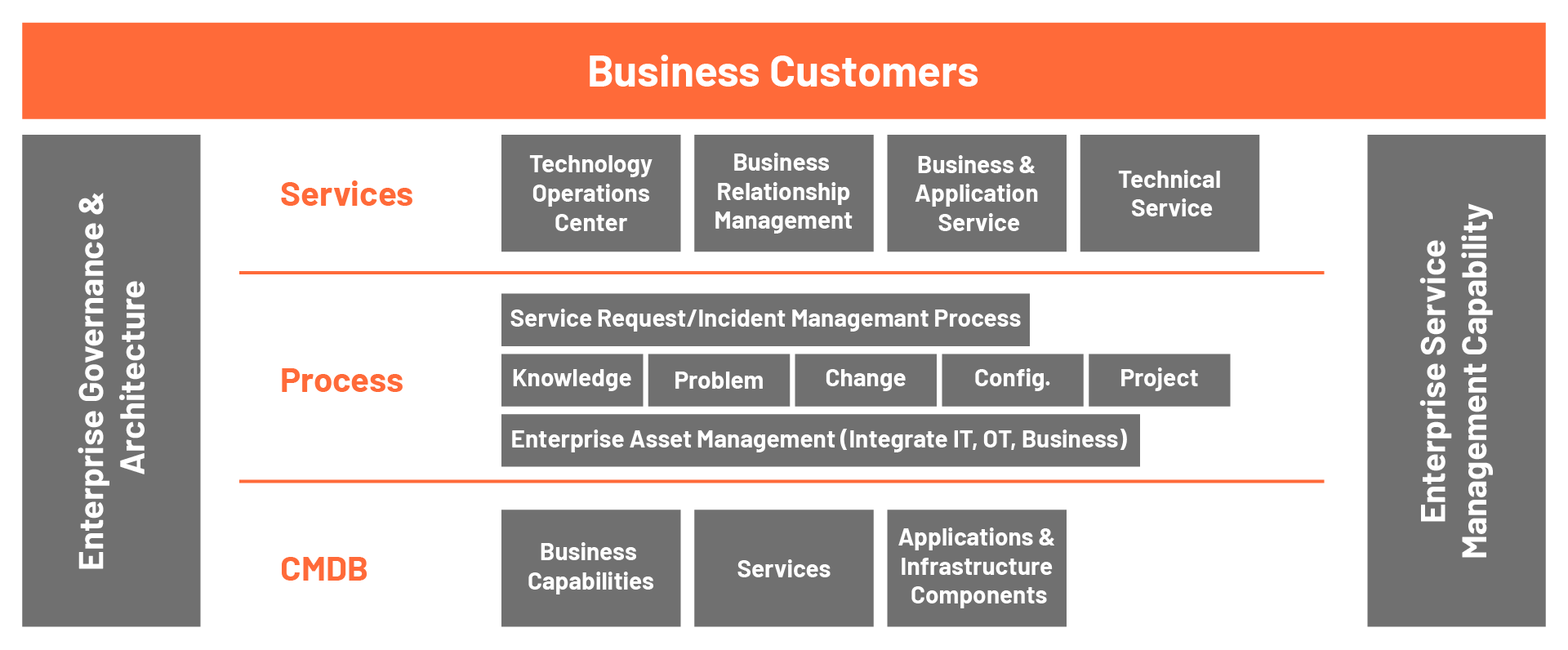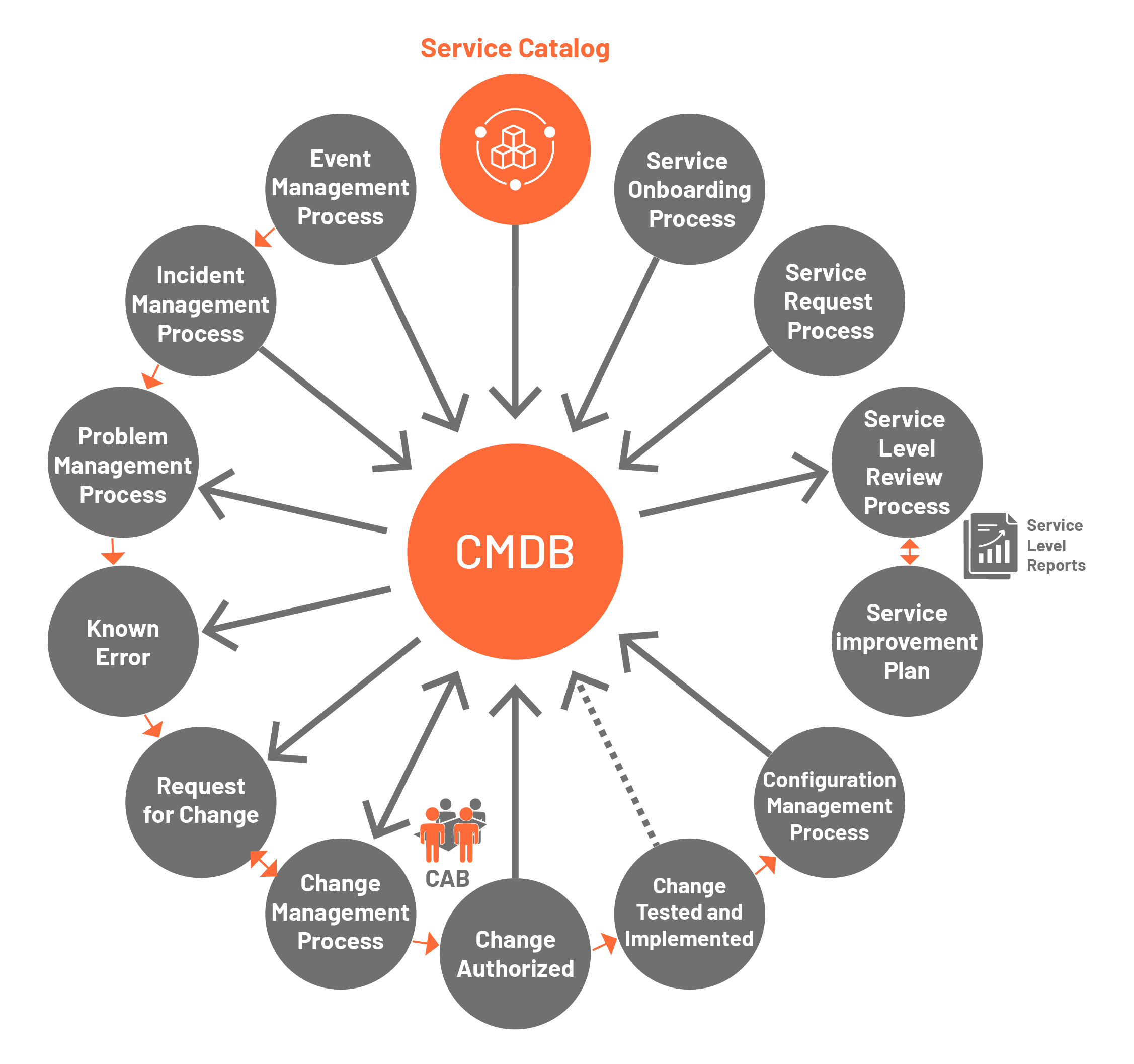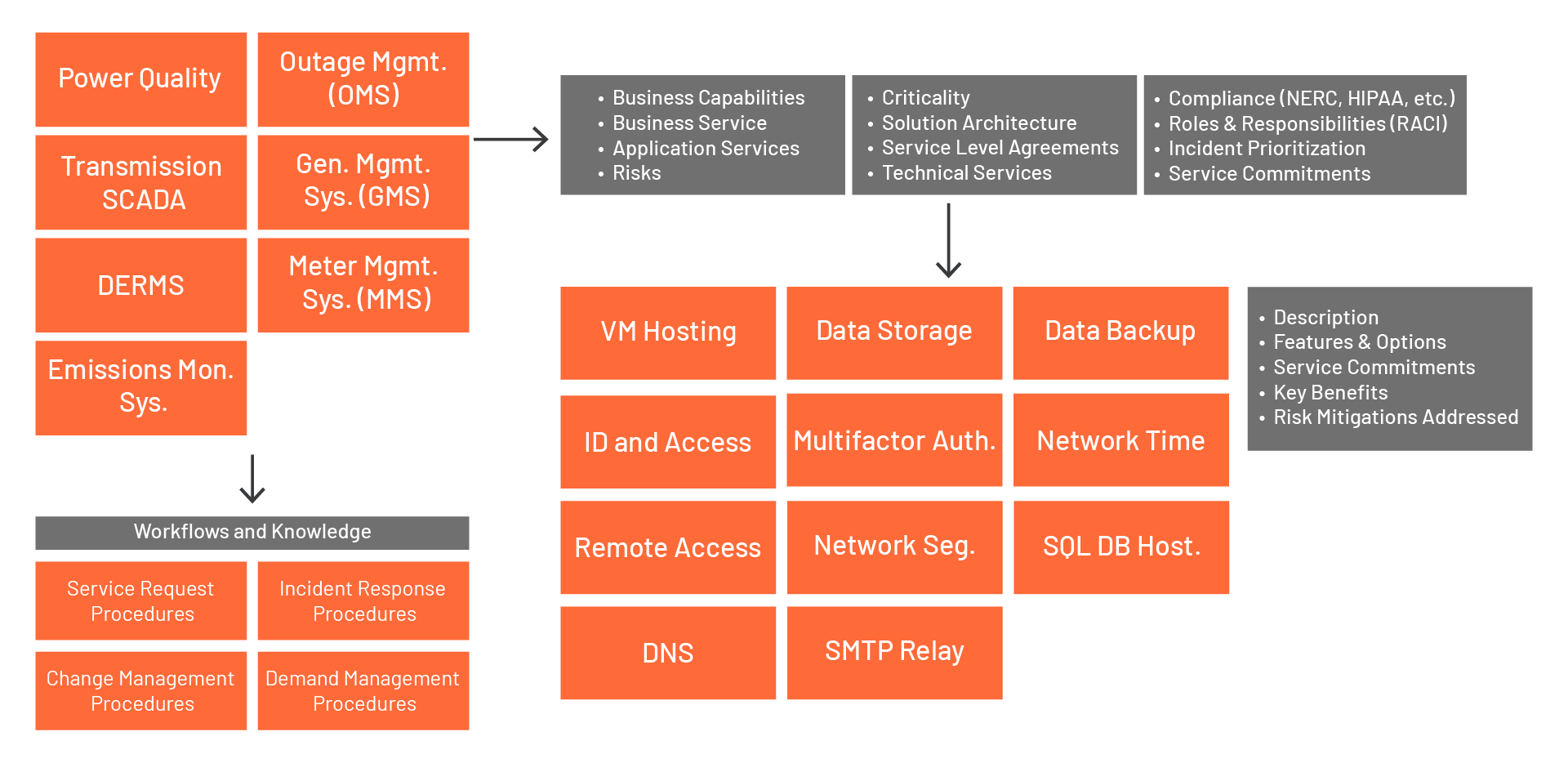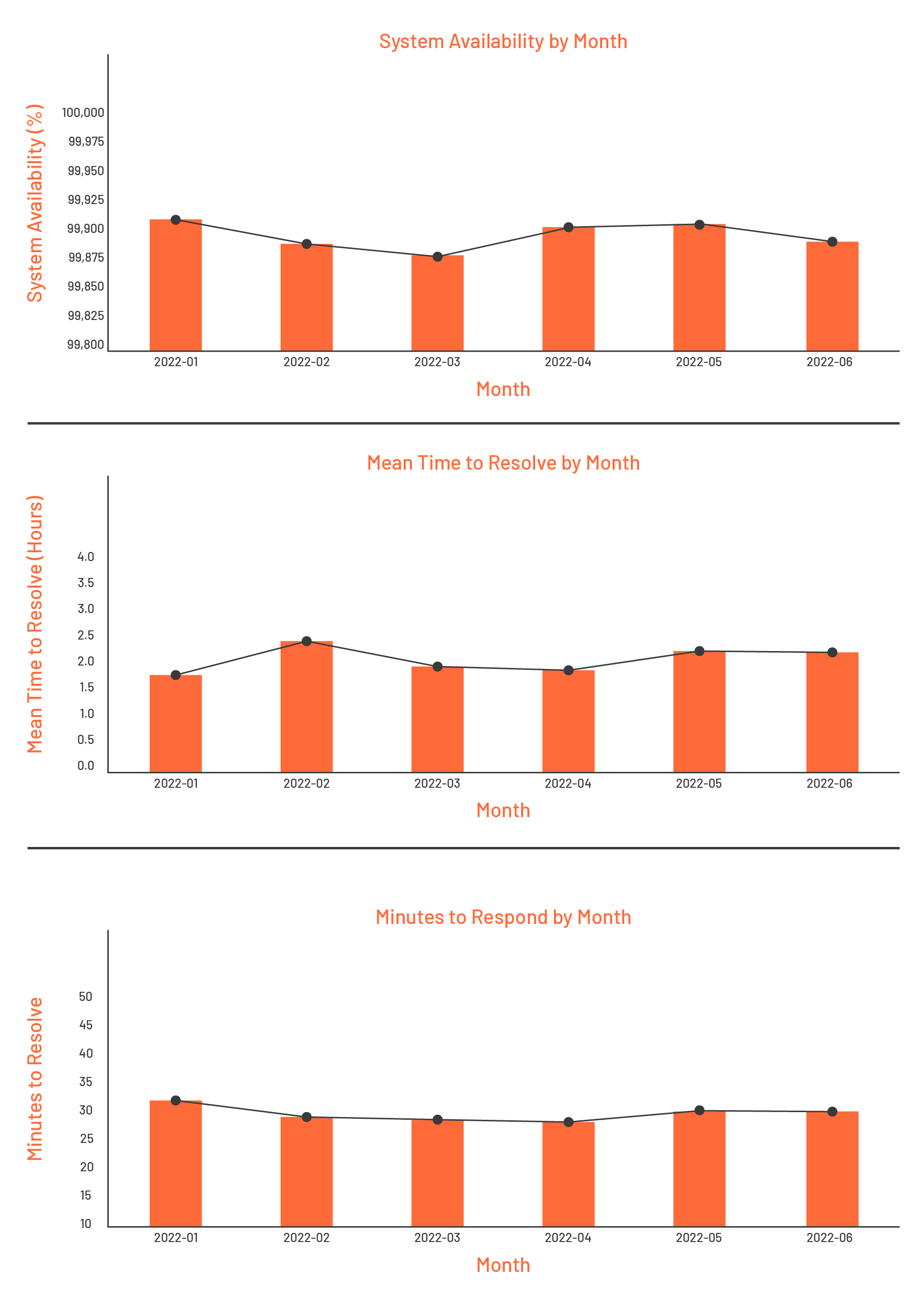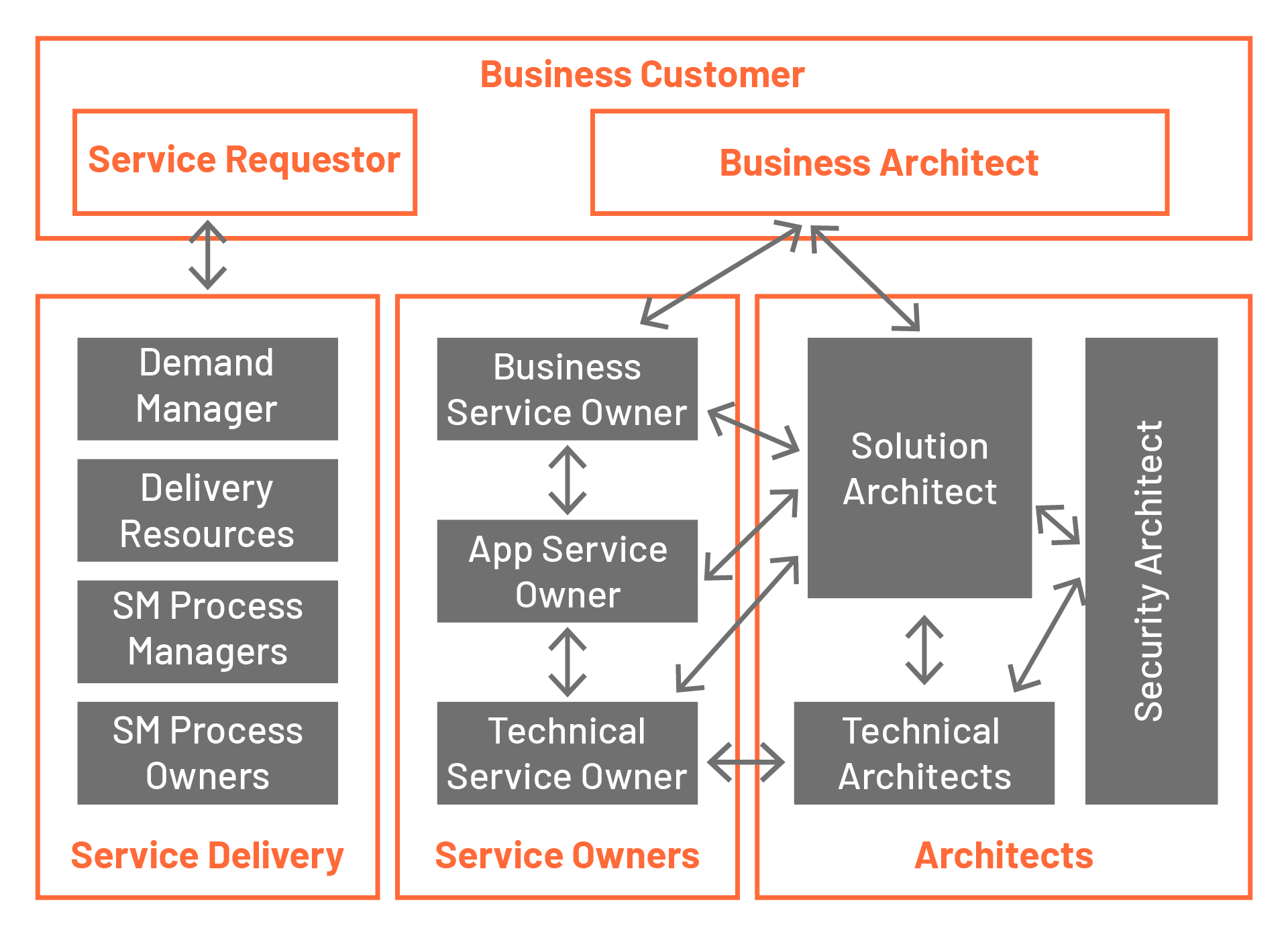Why is the service catalog important for both IT and OT?
The service catalog provides a foundational component of IT/OT governance and compliance, as it provides a clear record of services and their management processes while also enabling insights into services that could be consolidated or used across the enterprise rather than deployed and supported by each individual department or team. An integrated IT/OT service catalog provides building blocks that can be assembled by solution architects into secure enterprise solutions that deliver effective automation to meet business requirements.
Configuration Management Database (CMDB)
Configuration management is a process within service management that involves identifying, tracking and controlling configuration items (CIs) or assets — such as physical components, hardware, software, documentation and network devices — and the interrelationships that are essential for delivering a business service. When documented and maintained, the CMDB provides the information necessary to assist in identifying the root cause of incidents, analyzing chronic problems, managing risk and understanding the impacts of changes planned in the environment.
Why is the CMDB important for both IT and OT?
Technology is embedded in critical infrastructure to enable awareness and proactive management of anomalies. Bringing together data across IT and OT systems enables efficient and effective management of these anomalies. A single integrated CMDB provides input, receives updates from every service management process, and provides a source of information about every CI. The holistic view made possible by the CMDB provides understanding of what data or integrations may be impacted by an IT and/or OT outage. It also helps security architects design the necessary risk mitigation controls when examining cybersecurity risks.
Demand Management
Business customers often express desires or needs based on market trends, user efficiency concepts, or regulatory or business needs; these are called demands. Demands may require research, application development or infrastructure changes and may require approval from organizational governance.
Why is demand management important for both IT and OT?
Working with service owners, demand management is a planning methodology used to forecast and manage the demand for business, application or technical services. It involves understanding business needs and seeing that the service organization can meet those needs efficiently and effectively. These demands allow department heads to forecast workloads and timelines in alignment with corporate priorities.
Service Request Management
Service requests are formal requests to provide information, advice, a standard change, or access to an application or technical service. These requests could be routine, predefined and low-risk activities, or they could be more complex and require approval and scheduling from a business-driven change advisory board (CAB). Service requests include the necessary input as defined in the service catalog. This approach streamlines the configuration and implementation of services.
Why is service request management important for both IT and OT?
Both IT and OT manage the delivery of services to business customers. As technology continues to proliferate, coordination of service delivery across IT and OT becomes more critical. A key benefit of service request processes is the requestor’s ability to monitor the progress of a service request’s completion in alignment with stated completion expectations.
Event Management
Event management focuses on monitoring and managing events throughout their life cycle to maintain the reliability of application services and technical services. Key areas of event management are focused on detecting alerts, changes in state or other anomalies; logging the events; correlating events to see related events; and triggering incident management processes, notifying personnel and automating resolution.
Why is event management important for both IT and OT?
Effective event management helps organizations maintain operational resilience by quickly identifying and responding to events that could disrupt service. This means application services, technical services or business capabilities like power delivery are restored swiftly after incidents like storms, equipment failures or cyberattacks. Some potential service incidents can be identified before they cause an outage or other business impact. Additionally, event management helps with compliance by showing events are logged and promptly handled. Event management adds efficiency and even can enhance safety by providing situational awareness of the health of a system or service.
Incident Management
Incident management defines a process within an enterprise’s service management that focuses on identifying, analyzing and resolving incidents that disrupt or reduce the quality of business services. An incident is any unplanned interruption or reduction in the quality of a business service, application service or technical service. The primary goal of incident management is to restore normal service operation as quickly as possible to minimize the impact on business operations.
Why is incident management important for both IT and OT?
Implementing incident management helps to minimize downtime, improve efficiency, and promote knowledge sharing across IT and OT that can lead to faster problem-solving and skill development. Satisfaction grows across the enterprise as trust deepens through transparency and improved overall responsiveness and system reliability.
As a component of incident management, alert management involves receiving an alert, assessing the alert, prioritizing it, and responding to various operational events and incidents to maintain the reliability and safety of the operational technology.
Problem Management
Problem management identifies, analyzes and resolves the root causes of incidents to prevent their recurrence.
Why is problem management important for both IT and OT?
Effective problem management helps maintain the reliability and stability of the electric grid by promptly identifying and addressing problems to prevent outages and maintain consistent service. Proactively managing problems reduces the need for costly emergency repairs and minimizes downtime. This leads to more efficient operations and better allocation of resources. Effective problem management helps organizations meet these requirements, avoiding penalties and maintaining their reputation.
Change Management
Change management — focused specifically on changes to IT and OT application services, technical services, integrations, systems and/or infrastructure — involves a structured process to see that changes are planned, tested, implemented and reviewed in a controlled manner. When implemented effectively, change management can bring visibility to planned changes and prevent potential conflicting changes through the forward schedule of changes report and change approval process.
Why is change management important for both IT and OT?
Implementing change management processes significantly increases the chances of changes being executed with minimal risk and disruption to critical business operations. It enhances visibility into system modifications that could affect other integrated systems. Additionally, change management supports compliance and helps avoid financial penalties by documenting governance through the approval and implementation of changes.




